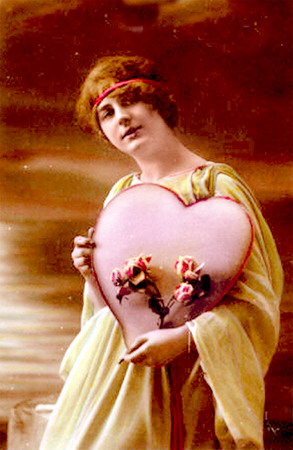
Valentine's Day (English: Valentine's Day), on February 14 is a day on which lovers and those who are in love declare his love, especially in the Western World.
Origin, supposedly Velentine day is one of the Roman Catholic feast day. The feast is in no way associated with "romantic love" as the concept of "Valentine's Day" today.
Today Valentine's Day is mainly associated with the exchange of a "statement of romantic love" in the form of modern Valentine symbols include the heart-shaped cards and drawing the figure winged cupid.
Start of the 19th century, the tradition of writing this love declaration encourage mass production of greeting cards. The U.S. Greeting Card Association estimates that worldwide approximately one billion Valentine cards sent per year. This makes Valentine's Day is the second biggest holiday after Christmas where greeting cards sent. This same association also estimates that women who buy less than 85% of all valentines.
In the United States began in the second half of the 20th century, the tradition of exchanging cards expanded and includes the provision of all kinds of gifts, usually by men to women. Used his gifts include roses and chocolates. Beginning in the 1980s, the diamond industry began to promote Valentine's Day as an opportunity to give jewelry.
A date on Valentine's Day is often thought that the pair were dating was involved in a serious relationship. Actually, Valentine's Day is a day of love, not just love with your girlfriend or boyfriend. Valentine's Day is a feast in the matter of love, but that does not mean none other than Valentine's Day love.
In Indonesia, the cultural exchange of letters between the words love boyfriend on Valentine's Day are imported from the U.S. is beginning to emerge. This tends to be a popular culture and consumerism as the celebration of Valentine's Day is mostly driven by the seller of promotional items related to Valentine's Day greeting cards such as love, box of chocolates, jewelry and dolls in stores and the media (TV stations, radio, and magazines teenagers). It is particularly common in big cities in Indonesia are rampant holding events associated with Valentine's Day. So its been very commercially unnoticed by the "believers" Valentine's Day that they have been used for dredged money.
History of the name Valentine (Valentinus)
According to the Catholic Encyclopedia (Catholic Encyclopaedia 1908), the name may refer Valentinus least three martyr or saint (a holy man) is different:
A priest in Rome
A bishop Interamna (modern Terni)
A martyr in the Roman province of Africa.
The relationship between the three martyrs was the feast day of romantic love is not clear. Even Pope Gelasius I, in the year 496, stating that in fact nothing is known about these martyrs. But today set February 14 as the feast day of saint Valentine warning. Some say that Pope Gelasius I accidentally set it to outperform the feast of Lupercalia which was celebrated on February 15.
Skeletal remains unearthed from the tomb of "Santo Hyppolytus he Via Tibertinus" near Rome, identified as the body of St. Valentinus. Then placed in a gold coffin and sent to the church "Whitefriar Street Carmelite Church" in Dublin, Ireland .. The body has been given to them by Pope Gregory XVI in 1836. Many travelers now make pilgrimages to this church on Valentine's Day, where the wine-gold coffin was paraded in a solemn procession and brought to a high altar. On that day a special Mass was held and dedicated to the young people and those who are in a relationship of love.
Valentine's feast day was removed from the ecclesiastical calendar in 1969 as part of a broader effort to remove saints whose origin is still in question, and only based on legend. only. But the feast is still celebrated in certain parishes.
Valentine's Day in modern era
Valentine's Day was probably imported into North America from the United Kingdom (UK), which colonize the area. In the United States the first Valentine card mass-produced printed after 1847 by Esther A. Howland (1828 - 1904) from Worceste, Massachusetts. His father owned a bookstore and office supply stores are great and he was inspired to produce the card from an English valentine she had received. (Since 2001, the Greeting Card Association annually awards issued "Esther Howland Award for a Greeting Card Visionary").

No comments:
Post a Comment